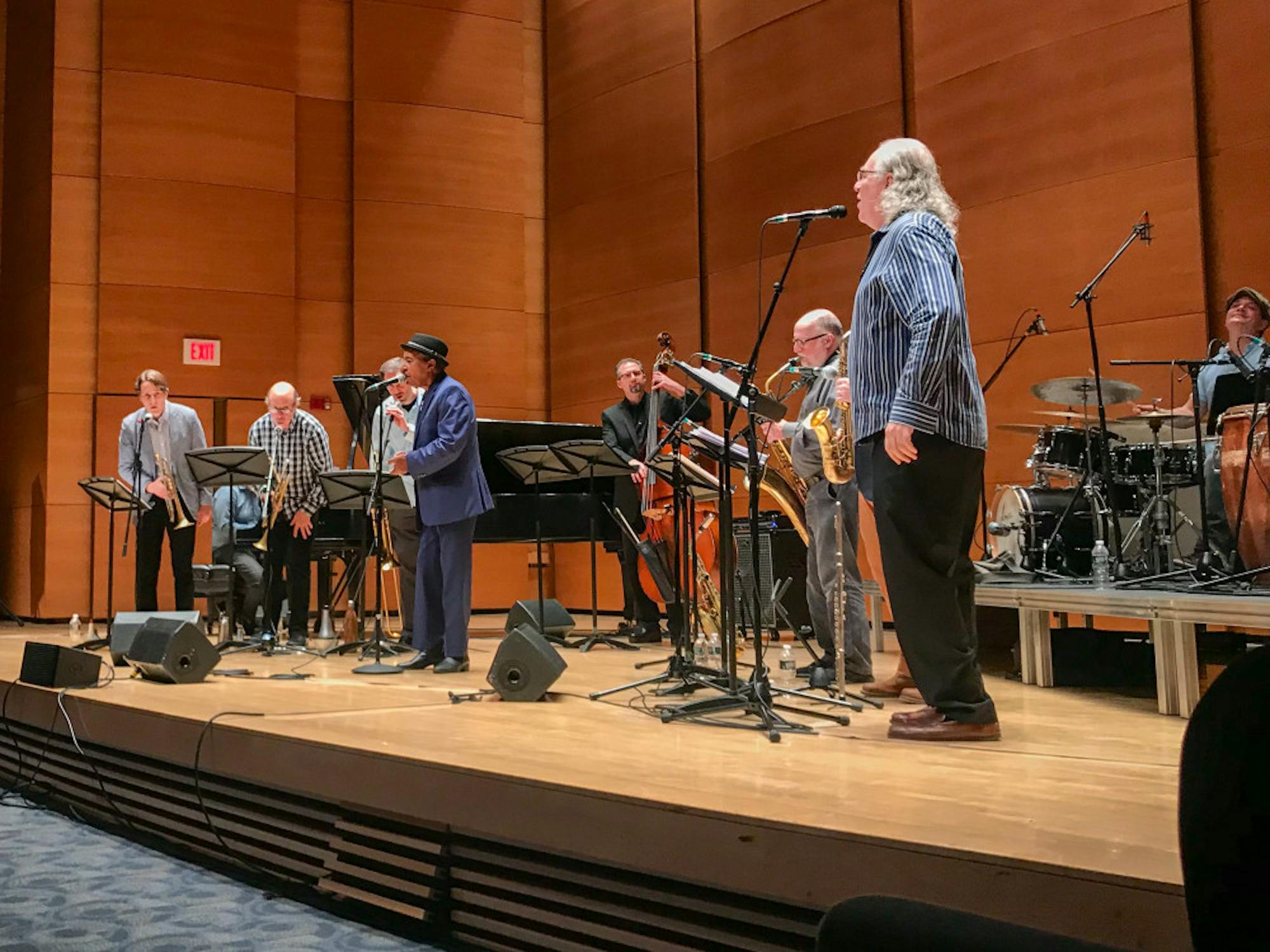The Either/Orchestra, directed and founded by saxophonistRuss Gershon, performed Fridayalongside vocalist Teshome MitikuinDistler Performance Hall at the Perry and Marty Granoff Music Center. This concert was an excellent testimony to the value of multiculturalism in music; in the wake of globalization movements of the 20th century, musical purism and musical multiculturalism have been topics of debate. Musical purists generally take stances against the blending of musical styles and prefer to keep musical genres segregated. Those in favor of multiculturalism in music are more likely to support the fusion of styles. The Either/Orchestra performs music drawn from several different traditions; in this particular performance, elements of jazz, American pop and traditional Ethiopian music were blended to create a completely new sound.
Originally fromEthiopia, Mitiku is no stranger to the effects of globalization on music. He held a prominent role in a wave of American-influenced bands in Ethiopia during the 1960s, and he sung with the Haile Selassie Theater Orchestra, an ensemble similar to an American “big band.” In his performance with the Either/Orchestra, Mitiku sang arrangements of traditional Ethiopian songs as well as some newer works,two of which were his own compositions. All but one of the songs performed were in Amharic, the official language of Ethiopia. Some features of the vocals were unlike anything heard in standard and tonal Western music, including microtones and melismatic passages, all of which were executed by Mitiku with precision and expertise. Alongside these traditional elements, Miktiku’s vocals featured many distinguishing characteristics of jazz and American pop music. Jazz chord progressions and pentatonic modes often supported the traditional vocals in a harmonious juxtaposition that served as auditory advocacy for globalization in music.
The fusion of jazz, popular music and traditional Ethiopian music contributed to a unique timbre, or sonic texture, of this performance. The layering of instruments traditionally found in jazz orchestras — namely the trumpet, trombone, saxophone, piano, double bass and drum set — with the conga drums and vocalist singing in an Ethiopian style, produced a sound unlike that of any mainstream musical ensemble. Despite this iniquitous melange of instruments, the careful arrangements, many of which were done by Gershon, highlighted the versatility of the musicians’ ability to blend these diverse sounds.
Gershon’s arrangements of the Ethiopian works certainly retained traditional melodic features but also remained loyal to many of the counter-melodic and harmonic elements of traditional song. The works performed were incredibly reactionary; instead of strict metrical constraints, the musicians often played off each other. The synchronization between the two percussionists, Brooke Sofferman (drums) and Vicente Lebron (congas), accentuated their ability to blend incredibly different-sounding instruments as well as their ability to weave together rhythms into a complex structure that acted as a foundation for the entire ensemble.
In addition to the rich auditory dimension of the performance, the visual aspect of the concert was important to the experience of audience members. The natural ebb and flow of the ensemble’s movements as well as the visual connections they formed with one another while on stage highlighted the complexity of the orchestrations and the performers’ passion for this music. Improvised solo interludes were featured in many of the works, each of which showcased a different member of the ensemble. It was in these improvised sections that the musicians were able to, quite literally, play to their strengths. Audience members were encouraged to clap or sing along in several pieces, enhancing the listening experience.
Thanks to Gershon’s arrangements and the willingness of the Either/Orchestra to tackle a somewhat unorthodox and fabricated genre of music, the ensemble succeeded in achieving a depth and coherence of sound that can only be created when each musician realizes the ensemble’s interdependence. Each instrument held a role in the arrangements, and the interconnectedness of them all proved that instruments that are not traditionally in an ensemble together can, when thoughtfully organized, support the others in forming a profound sound.
Invigorating juxtaposition of musical styles dominates Either/Orchestra performance

The Either/Orchestra, one of New England’s premier jazz ensembles, performs in Distler Performance Hall on Nov. 1.





